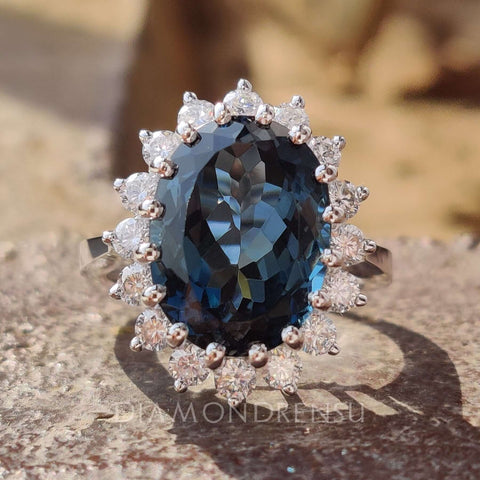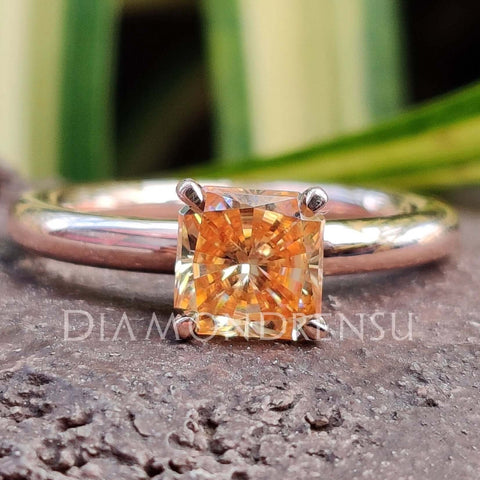
What Is the Resale Value of Rose Gold? Understanding Market Trends
When you're considering the resale value of rose gold, it's important to understand what sets it apart from other precious metals. Rose gold, known for its distinctive pinkish hue, is a gold and copper alloy that has surged in popularity in recent years, particularly in jewelry. Its unique color can offer a vintage look that appeals to a wide market, from engagement rings to luxury watches. Due to its increased demand, rose gold items can often retain a significant portion of their original value, making them a viable option for investment.
In the jewelry market, the value of rose gold pieces varies considerably, influenced by factors such as the purity of gold, the reputation of the designer or brand, the intricacy of the design, and the current market trends. While pure gold is always valuable, the craftsmanship and brand associated with a rose gold jewelry piece can elevate its desirability and, consequently, its resale price. High-quality rose gold jewelry often fetches a better price than all other materials except for rose gold.
The resale value of rose gold is also connected to the overall perception of its worth. As a sought-after alternative to traditional yellow or white gold, it has carved out its niche within the luxury market. Remember, the condition of the jewelry and current fashion trends play pivotal roles in determining its potential resale value. As with any fine jewelry, a piece made of rose gold with a timeless design and maintained in excellent condition is more likely to retain or increase in value over time.
Understanding Rose Gold
Rose gold is not just a unique shade; it's both a timeless classic and a contemporary trend that has influenced various industries from fine jewelry to fashion. Its warm hue and durability, along with its romantic connotation, makes it a popular choice for those looking to make a statement.
Composition of Rose Gold
Rose gold is an alloy consisting primarily of gold and copper, with the inclusion of silver for certain shades. Gold's karat, a measure of purity, ranges from 14k to 22k in rose gold, with 18k being common. The alloy mix determines its color and strength—the higher the gold content, the softer the metal, whereas higher copper content gives a stronger, reddish color.
History and Significance
Originating in early 19th-century Russia, rose gold was termed Russian gold for its widespread use. Notable figures such as Carl Fabergé, creator of the famous Fabergé eggs, opted for this metal's distinctiveness. Rose gold garnered fame again during the Art Deco period, with brands like Cartier highlighting its appeal with creations like the Trinity ring.
Color Variations and Skin Tones
Rose gold comes in several shades, from pale pink to deep red, often labeled as pink gold or red gold. The amount of copper in the alloy affects the intensity of the pinkish hue. These variations complement a range of skin tones, offering flattering choices for different individuals.
Rose Gold in Contemporary Fashion
In modern times, rose gold has become a trendy addition to fine jewelry collections. The allure of rose gold's romantic and timeless essence makes it a staple in high-fashion and everyday wear, maintaining its popularity across different demographics.
Market Availability and Brands
Today, rose gold jewelry is readily available, with numerous brands offering diverse pieces. Renowned for its place in luxury jewelry, Cartier along with other distinguished names, continues to celebrate the allure of rose gold. The market showcases a variety of options, from 18k to more affordable 14k pieces, ensuring accessibility for a wider audience.
Physical Properties and Durability
| Property | Description |
|---|---|
| Composition | Mixture of gold, copper, and a small amount of silver or zinc |
| Color | Distinctive pinkish or reddish color due to the presence of copper |
| Hardness | Varies depending on the karat, typically ranges from 14 to 18 karats |
| Melting Point | Depends on the karat, but generally between 880°C to 900°C (1,616°F to 1,652°F) |
| Density | Varies with the karat, typically around 14.8 to 15.6 g/cm³ |
| Malleability | Highly malleable and can be easily shaped into various forms |
| Corrosion Resistance | Rose gold exhibits good resistance to corrosion and tarnish |
| Applications | Commonly used in jewelry, watches, and other decorative items |
When determining the resale value of rose gold, the purity, karatage, and the blend of metals in the alloy are crucial. These factors directly influence the durability and resistance to tarnish, making them key determinants of longevity and value.
Purity and Karatage
Rose gold's value is often represented by its karatage, which indicates the gold content in the alloy. 18k gold, for instance, consists of 75% gold and 25% other metals. This level of purity ensures a fine balance between intrinsic value and the strength provided by the additional metals. The higher the karat, the greater the gold content, but this also means the metal is softer and may be more prone to scratching and deformation.
Gold Alloys and Durability
The durability of your rose gold piece significantly depends on the alloys used to create the metal blend. Rose gold is a gold alloy that includes copper to give it its characteristic warm hue; silver may also be added. The proportions of these metals affect not only color but also toughness. Alloys are created to enhance the metal's durability against wear and tarnish. For example, a rose gold piece with a higher copper content will be more durable but may also be susceptible to tarnishing over time. On the other hand, adding too much of other metals may decrease the carat weight, affecting the item's purity and value.
Rose Gold Jewelry Varieties
Rose gold jewelry encompasses a range of pieces from daily wear to special occasions, known for its distinctive warm hue that adds a touch of elegance and charm.
Engagement Rings and Romance Jewelry
When you're considering engagement rings, rose gold is a romantically favored metal. Its pinkish hue often complements diamonds and morganite stones exquisitely, symbolizing love and passion. Rose gold engagement rings vary in style from vintage-inspired to modern designs, engraved with fine details or featuring larger solitaire stones for impact.
Casual and Formal Wear Pieces
Your jewelry collection may include both casual and formal rose gold pieces. Necklaces, earrings, and bracelets in rose gold transition well from everyday attire to more dressed-up outfits. Delicate chains and simple rose gold studs offer a subtle sparkle for daily wear, while thicker bangles and necklaces with intricate pendants serve as statement pieces for formal events.
Unique and Custom Designs
If you’re in search of unique jewelry, custom-designed rose gold pieces are an excellent choice. They can be personalized to match your style and often feature creative blends with other metals, or incorporate colorful gemstones. Artisans can craft one-of-a-kind rose gold creations that resonate with personal stories or represent individual aesthetic preferences.
Rose Gold as an Investment

Rose gold has garnered attention for its aesthetic appeal and its potential as an investment. Understanding the intricacies of its market can determine the potential it holds for your portfolio.
Resale Value Factors
The resale value of rose gold is influenced by several factors. Market value is a prime determinant, fluctuating with supply and demand. The price you receive when selling rose gold also depends on its gold content, measured in grams; the higher the content, the greater the value. Additionally, the condition of the rose gold piece and current fashion trends can affect the resale worth. You may incur a commission cost if selling through a third party, which reduces the net payment you receive.
Investment Comparison with Other Precious Metals
When comparing rose gold to other precious metals such as yellow gold, white gold, and platinum, the value proposition varies. Platinum usually commands a higher price due to its rarity and density. Traditional yellow gold is often valued for its purity and historical significance. White gold, often compared with rose gold, frequently has a rhodium coating that can affect resale value when it wears off. In contrast, rose gold is prized for its unique color and durability but is usually less dense in gold content due to the alloy mix, which can influence its resale value.
Buying and Selling Rose Gold
Your process of buying and selling rose gold will involve several steps. When making a purchase, consider the seller's reputation, especially when buying online. Ensure you receive a certificate of authenticity, which confirms the exact gram weight and gold content. When selling, opt for buyers who offer competitive rates relative to the current market value. Payment terms may vary whether you transact in the USA, UK, Euro zone, or Colombia. Always be aware of the current gold prices and transaction fees to maximize your investment's return.
Caring for Rose Gold Jewelry

Proper care and maintenance of your rose gold jewelry will ensure that its beauty and value are preserved over time. By attending to regular cleaning and secure storage, you can protect your investment in elegance.
Maintenance and Storage
Maintenance: Regularly inspect your rose gold jewelry for any signs of wear or damage. It’s important that you gently wipe your pieces with a soft cloth after each use to remove oils and other residues. For daily care, keep your jewelry away from harsh chemicals, such as chlorine and cleaning agents, which can discolor or damage the metal.
- Avoid contact with water and remove your rose gold items before swimming or showering. Prolonged exposure to water can weaken the metal's shine.
- Store your jewelry in a fabric-lined jewelry box or a soft pouch to prevent scratches.
- Keep rose gold pieces separate from other metals to avoid abrasion.
Professional Cleaning and Rhodium Plating
Cleaning: While regular home care is essential, taking your rose gold jewelry to professionals for thorough cleaning can help maintain its luster. Professional jewelers have the expertise to deep clean without harming the metal or any set stones.
Rhodium Plating: Rose gold jewelry can benefit from occasional rhodium plating, which revives the item by adding a protective layer. This process can enhance your jewelry’s luster and provide a barrier against scratches and tarnishing. However, it is essential to consult with a jeweler who specializes in rose gold to ensure the highest standard of care.
Practical Considerations for Consumers

When considering the resale value of rose gold items, take into account the initial purchase price and the gold's purity. Keep in mind that the market value and the inherent value of rose gold may differ.
Affordability and Budgeting
Understanding the affordability of rose gold jewelry is crucial for effective budgeting. Prices for rose gold can vary widely based on purity and craftsmanship. Before purchasing, evaluate:
- The current market price of gold
- The premium for rose gold due to its popularity and copper alloy content
Set a budget that reflects both the upfront cost and potential future value.
Choosing the Right Rose Gold for the Occasion
Selecting rose gold jewelry for a specific occasion involves balancing personal taste with item value. Consider the context:
- Casual events might allow for lower karat, more affordable options.
- Formal gatherings or significant events may warrant higher karat, more expensive pieces with greater long-term value.
Know that higher karat rose gold, while more expensive, often retains value better over time.
Understanding Hallmarks and Certification
To ensure the jewelry's value, look for hallmarks and proper certification:
- Hallmarks indicate the gold's purity, often found stamped inside rings or on clasps.
- Certification from reputable sources can affirm the metal's quality.
Pure gold jewelry, including rose gold, should have a hallmark such as "10K," "14K," or "18K." Always verify authenticity to protect your investment.
Global Influence on Rose Gold Value

The value of rose gold is closely intertwined with both international cultural attitudes and the prevailing economic environment. Understanding these influences can help you make informed decisions about selling or investing in rose gold items.
Cultural Appreciation and Trends
The popularity of rose gold is significantly affected by cultural trends which vary across the globe. In some cultures, rose gold is seen as a symbol of luxury and status, and as trends evolve, these perceptions can drive demand and affect market value. For example, when rose gold becomes a trendy choice in jewelry or technology products, you might notice a surge in its resale value. This increase is reflective of the item's desirability, which is often showcased in fashion shows, media, and celebrity endorsements.
Impact of Economic Conditions
Your understanding of the influence of economic conditions on the price of rose gold is crucial. During periods of economic stability, luxury items like rose gold often maintain or increase in value, as consumers have more disposable income for such purchases. Conversely, in times of economic stress, the market value might decline as consumers prioritize essentials. Moreover, the price of rose gold is also linked to the global economy; factors include the mining output of gold, fluctuations in currency exchange rates, and the overall health of the international trade market. These elements, collectively, dictate the immediate and long-term economic backdrop against which rose gold is bought and sold.
Conclusion
When you consider the resale value of rose gold jewelry, you're looking at a market that appreciates the unique qualities of this alloy. Rose gold, known for its warm, pinkish hue, is a blend of gold with copper, which not only gives it its distinctive color but also a certain level of durability. The value of rose gold items often hinges on several factors:
- Purity: The actual gold content, typically measured in karats.
- Market Demand: Trends in fashion can influence the desirability of rose gold.
- Condition: The state of the piece; scratches and tarnish can detract from its value.
When looking to resell rose gold jewelry, remember that market prices fluctuate. However, high-quality pieces and well-crafted designs might fetch a better price. A recent study suggests that certain luxury items, like watches with rose gold, can maintain a remarkable resale value, often better than other materials, save for pure gold.
Your piece's value is also impacted by the current gold market. As an investment, rose gold behaves similarly to traditional gold, acting as a hedge against inflation, though the added copper can cause it to be appraised differently. Be mindful that the attractiveness of rose gold to buyers can be subjective and what one person may pay more for, another may not value as highly.
In the context of the broader jewelry market, rose gold pieces are often sought after for their vintage appeal and romantic look. While gold generally retains a resale value, the unique charm of rose gold can appeal to niche buyers looking for something that stands out from the conventional yellow or white gold.
Frequently Asked Questions
When assessing the resale value of rose gold, you must consider factors such as market demand, the purity of the alloy, and current gold prices. This FAQ section addresses common queries to help you understand how these elements affect the value of rose gold.
How is the price of rose gold determined per gram?
The price of rose gold per gram is influenced by the current market price of gold and the percentage of other metals in the alloy. Rose gold is usually an alloy containing gold, copper, and sometimes a small amount of silver. The gold content is measured in karats, with 24k being pure gold.
What factors influence the resale value of 14k rose gold?
Resale value of 14k rose gold is affected by its gold content, craftsmanship, and the market demand. As it contains about 58.3% gold, the remainder being copper and silver, the intrinsic value is weighted against these proportions. The design and brand can also command a premium.
Can you explain the differences in value between 10k, 14k, and 18k rose gold?
10k rose gold has around 41.7% gold content, making it more durable but less valuable per gram than higher karats. 14k rose gold strikes a balance with durability and higher gold content at 58.3%. At 75% gold content, 18k rose gold is typically more valued but less durable due to its softness.
Is there a significant difference in value between rose gold and traditional gold?
Rose gold and traditional gold are valued for their gold content, so their market value is largely comparable when they have the same karat rating. However, the color and rarity of rose gold can sometimes command a slightly higher price in certain markets or pieces.
What should be considered when pawning rose gold items?
When pawning rose gold items, consider the item's weight, karat, and the pawn shop's current pricing on gold. Additionally, the item's condition and any historical or brand significance could influence its pawn value.
What are the benefits and drawbacks of investing in rose gold jewelry?
Investing in rose gold jewelry offers the benefit of diversifying your investments and owning a tangible asset with intrinsic value. Conversely, the drawbacks include the potential for lower liquidity compared to pure gold investments and susceptibility to fashion trends which can affect resale value.
Checkout some of our top collections:
Leave a comment
Please note, comments must be approved before they are published.














